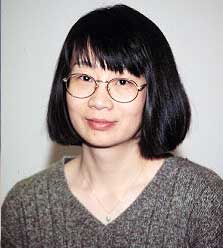|
||||||||||||||||
|

Zhongchi LiuProfessorPh.D., Harvard University, 1990Telephone: (301) 405-1586 Fax: (301) 314-9082 E-mail: zliu@umd.edu Research Interests: Molecular genetics of plant reproductive development in Arabidopsis thaliana. The research in the our lab is focused on understanding the basic mechanisms of higher plant reproductive development. Our approach involves the genetic identification, isolation and analysis of genes that regulate flower organ initiation, differentiation, and development in the model plant Arabidopsis thaliana. Several molecular genetic techniques such as map-based cloning, T-DNA/transposon knockout, yeast two-hybrid screens, and microarray analyses are being used. Ultimately, our study may provide the basis for genetic engineering of plants for agricultural and biomedical applications. Our current research mainly concerns two aspects of
flower development. Second, we are interested in understanding how inflorescence and floral meristems are organized and what genes regulate the cell division activity and cell division orientation in inflorescence and floral meristems. Mutations in TSO1 cause defects in cell division in Arabidopsis floral meristems and cause inflorescence meristem fasciation. We have recently isolated the TSO1 gene using the map-based approach and showed that TSO1 encodes two putative DNA-binding cysteine-rich repeats and is localized to the nucleus (Song et al., 2000). Thus, TSO1 likely encodes a transcriptional regulator that regulates genes involved in cell division and meristem organization. Our lab is further characterizing the TSO1 protein, its localization, and the regulation of its expression. Additional projects involve the identification of genetic enhancers and suppressor, and identifying its target genes. Recent PublicationsC. Wang and Z. Liu (2006). Arabidopsis Ribonucleotide Reductase are Critical for Cell Cycle Progression, DNA Damage Repair, and Plant Development. Plant Cell (In press). Z. Liu (2005) Regulatory Mechanisms for Floral Organ Identity Specification in Higher Plants. In Gene Expression and Regulation, a Current Scientific Frontiers Book (Ed. J. Ma). Higher Education Press, Beijing and Blackwell Publishing. (In press) Bao, X., Franks, R.G., Levin, J.Z.,
and Liu, Z. (2004) Repression of AGAMOUS by BELLRINGR, in Floral
and Inflorescence Meristems. Plant Cell 16, 1478-1489. Franks, R.G. and Liu Z. (2001) Floral Homeotic Gene Regulation. HORTICULTURAL REVIEWS 27, 41-77. Song J, Leung T, Ehler LK, Wang C, Liu Z. (2000) Regulation of meristem organization and cell division by TSO1, an Arabidopsis gene with cysteine-rich repeats. DEVELOPMENT 127,2207-2217. Liu, Z., Franks, R.G. and Klink, V. P. (2000) Regulation of marginal tissue formation by LEUNIG and AINTEGUMENTA. PLANT CELL 12, 1893-1902. Conner, J. and Liu Z. (2000) LEUNIG, a putative transcriptional co-repressor that regulates AGAMOUS expression during flower development. PNAS 97, 12902-12907. Scovel, G., Altshuler, T., Liu, Z., and Vainstein, A. (2000) The EVERGREEN gene is essential for flower initiation in carnation. J. of Heredity 91, 487-491. Liu, Z., Running, M. R., and Meyerowitz, E. M. (1997) TSO1 function in cell division during Arabidopsis flower development, DEVELOPMENT 124, 665-672. Liu, Z., and Meyerowitz E. M. (1995). LEUNIG regulates AGAMOUS expression in Arabidopsis flowers. DEVELOPMENT 121, 975-991. | ||||
|
|
|||||
|
